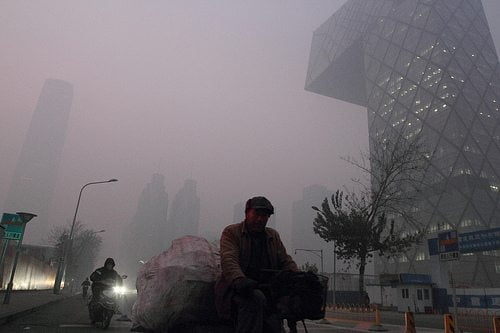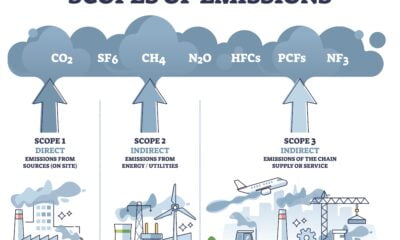

Environment
Planting forests may ease Beijing pollution crisis – but other solutions are needed
Planting “an army of trees” in the Chinese capital Beijing could help combat the city’s severe air pollution crisis, but such a strategy should not be seen as an easy way out, a scientist has said.
Writing for the Conversation, Jun Yang, an associate professor at Tsinghua University’s Centre for Earth System Science, says that Beijing “has been affected as much as the next city by polluted air”.
The capital recently introduced a new pollution-monitoring plan in response to growing concern over the dangerous levels of particulate matter such as PM2.5.
It issued its first ever orange alert – the second most severe ranking out of four – following the detection of PM2.5 at a concentration of 237 micrograms per cubic metre near Tiananmen Square.
This is nine times the level recommended as being safe by the World Health Organisation (WHO). In January, PM2.5 levels reached 671 – 26 times the WHO’s recommended level.
In 2012, the local authorities launched a programme that pledged to invest 30 billion RMB (£2.9 billion) to plant 67,000 hectares of trees around Beijing over the next few years.
Yang explains in his article that studies have suggested trees could help by intercepting pollution particles and lowering temperatures by providing shade and evapotranspiration. He adds that this could indirectly lower emissions by reducing the need for energy-using fans and air conditioners.
However, that this initiative may not clear Beijing’s dirty air as much as the city’s government hopes.
“The initial results from our study are mixed”, Yang writes.
“Trees planted in the last two years can reduce pollution particles from Beijing’s air, but the magnitude of removal is far lower than the government would hope.”
Yang warns that six of the tree species that have been planted across the city are actually high emitters of potentially problematic biogenic volatile organic compounds.
He says, “It’s too early to say what the final impacts of trees are on smog particles in Beijing. So, what is the message for other cities? Making cities greener by planting urban forests should not be treated as a standalone air pollution control measure.”
He adds, “In fact, measures that are more effective but also more painful to implement should be giving the priority, such as reducing the use of cars.”
“It’s important to remember that it is our growing use of cars and industrial emissions that are the source of the smog; sadly no amount of trees can counteract this.”
In response to the ‘airpocalypse’ – as it has been dubbed – and China’s growing contribution to climate change, the government recently embarked on a massive renewable energy drive.
China’s former health minister Chen Zhu recently estimated that air pollution – the fourth biggest killer in Beijing – accounts for up to 500,000 premature deaths in China each year.
Meanwhile, recent events have shown that such crises are not limited to China. Last week, air pollution levels as severe as those in Beijing were detected in Paris.
According to the European Environment Agency, as many as nine out of 10 people living in European cities are breathing in air so polluted it may shorten their life expectancy.
Further reading:
China prepares to strengthen environmental law to control pollution
China dispatches pollution inspectors as Beijing smog crisis continues
Beijing issues first ‘orange’ pollution warning amid smog crisis


 Environment10 months ago
Environment10 months agoAre Polymer Banknotes: an Eco-Friendly Trend or a Groundswell?

 Environment11 months ago
Environment11 months agoEco-Friendly Home Improvements: Top 7 Upgrades for 2025

 Features9 months ago
Features9 months agoEco-Friendly Cryptocurrencies: Sustainable Investment Choices

 Features10 months ago
Features10 months agoEco-Friendly Crypto Traders Must Find the Right Exchange






























